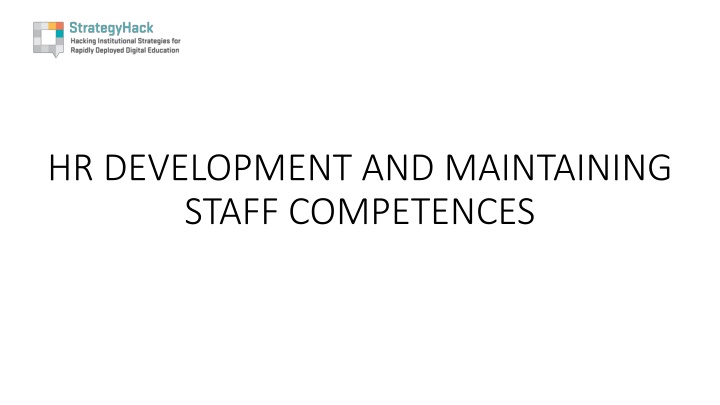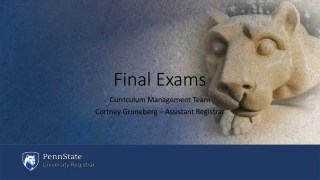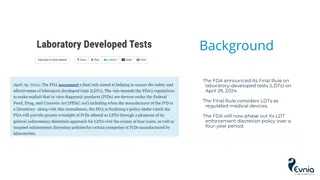
Future of HR Work: Embracing Digital Transformation for Success
Explore the impact of digitalization on HR work, focusing on five key dimensions for a modern HR strategy within organizations. Discover how digital culture and the shift towards valuing employees as individuals are shaping the future of work.
Download Presentation

Please find below an Image/Link to download the presentation.
The content on the website is provided AS IS for your information and personal use only. It may not be sold, licensed, or shared on other websites without obtaining consent from the author. If you encounter any issues during the download, it is possible that the publisher has removed the file from their server.
You are allowed to download the files provided on this website for personal or commercial use, subject to the condition that they are used lawfully. All files are the property of their respective owners.
The content on the website is provided AS IS for your information and personal use only. It may not be sold, licensed, or shared on other websites without obtaining consent from the author.
E N D
Presentation Transcript
HR DEVELOPMENT AND MAINTAINING STAFF COMPETENCES
WHAT FUTURE FOR HR WORK? Digitalization has changed the world of work and has given rise to new types of relationships between employees and leaders. We identified five dimensions which must be considered for the development of a modern and efficient HR strategy inside institutions. The objective is to guarantee the success of the institution itself, but also to ensure the well-being of the people who are part of it. 1. CONTEXT 2. DIGITAL CULTURE 3. DIGITAL IS PEOPLE 4. DIGITAL HR PRINCIPLES 5. DIGITAL HR TRENDS
CONTEXT Digitalization has changed the work scenario, rendering the traditional structure of organizations obsolete and no longer compatible with today s needs. Traditionally, organizations adopt a hierarchic, multi-level management system, often congested with bureaucracy. By focusing just on efficiency and control, this system drastically reduces the workers freedom and autonomy. A new point of view should be adopted, through which the organization is envisaged not as a clockwork mechanism but as an organic ecosystem. Control Enforcing Rules Bureaucracy Flexibility Providing Guidelines Trust From To
DIGITAL CULTURE This new context requires organizational agility, which is more often found in enterprises founded or operating in the digital area. The Netflix Culture is a good example of this, as it crafted different kind of organization based on: - More freedom for the employees, who are free to pursue their goals following guidelines in the way they consider to be more efficient instead of following strict policies. As theorized by Reed Hastubgs (Netflix CEO) Erin Meyer (Business School Professor) - Accountability & responsibility in a no-blame culture, that encourage the initiative of the employee, who is more inclined to take risks that could ultimately benefit the institution. - Communication inside the workplace, giving the chance for workers to propose innovation and the courage to even contradict choices that come from above. - A Horizontal Approach, reducing the impact of corporate hierarchy and giving importance to self- management and integrity of workers. The ultimate goal of the institution should be to interpret work as a continuation of the daily life of the employees, based on their subjective needs. Since everyone is different, the institution should strive to adapt to the individuals just as much as the individuals adapt to the institution. Frederic Laloux; Reinventing Organisations: A Guide to Creating Organisations Inspired by the Next Stage of Human Consciousness, Nelson Parker, February 9, 2014. Patty McCord, How Netflix Reinvented HR, Harvard Business Review, Jan-Feb 2014
DIGITAL IS PEOPLE The goal outlined in the previous slide requires that employees must no longer be considered mere tools and resources for the institution, but veritable people. To achieve this objective, we suggest that institutions focus on these areas: 1. Workspaces: job tools and workplaces should not be limited to those provided by the institution but must also be left to the discretion of the employees, taking into account their subjective needs (e.g., smart working techniques). 2. New ways of working: less importance should be given on where, how, and for how long the work is being performed, and more on its final results. 3. Skills and roles: roles should be more flexible, more horizontal and egalitarian in nature instead of vertical and hierarchical. Flexibility also allows people to exchange skillsets. 4. Digital leadership: should be based on trust, on the idea of granting more autonomy to employees, making room for bottom-up contributions, mentoring and guidance.
DIGITAL HR PRINCIPLES In order to achieve a positive employee experience, it is necessary to adopt new practices in HR management, which usually go under the name of New People Strategies. These should be the new Digital principles to be considered by HR management: 1. Speed and simplicity: digital is fast and simple. HR must strive to adopt simple, easy to access and understandable procedures for employees to see their rights guaranteed. 2. Scalability and customization: what HR does must be "scalable . HR services must be clustered and personalized. 3. External ecosystem: In order to meet the requirements outlined in the first two principles, HR management should not be afraid to source their tools from third-parties, such as from start-ups and universities, adapting them to their specific context. 4. Phygital Enterprise : HR should strive to create an integrated experience (both physical and virtual). 5. Beta Approach: HR should continuously update adopted practices to keep up with the times. 6. Continuous feedback: Constant insight should be gathered through feedback and refresher courses. 7. Culture of failure: failure should be considered as something positive that may even lead to innovation.
DIGITAL HR TRENDS Listed below are some examples of recent trends in HR innovation coming from major enterprises: 1. Attraction: How can HR describe a work position in the most appealing way possible? Netflix and The Witcher series: using storytelling as a tool to communicate their corporate mission. 2. Recruiting: How can HR improve the selection of candidates? Monster app: using a swipe-to-right system similar to that of Tinder, it allows people to apply to jobs. Using AI: AI can be a tool useful to prevent unconscious bias of the recruiter that unfortunately still have an important impact in the hiring process. AI itself, though, could be biased, so HR should also take this risk into account. 3. Performance & Development: How can HR improve their procedures on a daily basis? Adobe and feedback gathering: using new methodologies, such as applications on employees phones, feedback is constantly gathered. People who give feedback are rewarded for their efforts. 4. Learning: How can HR better obtain higher skilled employees? Microlearning: Fragment training in order to let people learn at their own pace in their daily life. 5. Collaboration: How can employees better work together? Slack / Trello: Using modern tools or applications for project management and to improve the workflow can improve productivity, transparency and access to information.


![READ⚡[PDF]✔ Yup I'm Dead...Now What? The Deluxe Edition: A Guide to My Life Info](/thumb/20463/read-pdf-yup-i-m-dead-now-what-the-deluxe-edition-a-guide-to-my-life-info.jpg)

















